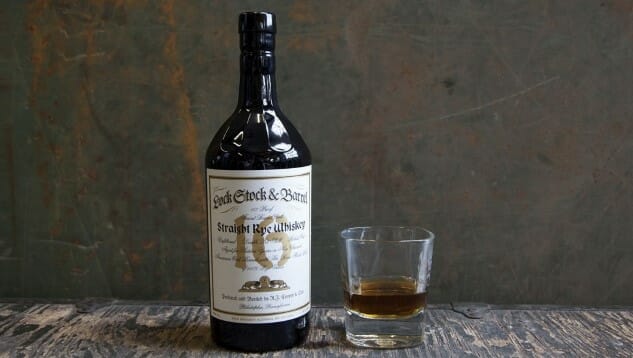Two Ryes from Cooper Spirits: Hochstadter’s Vatted Rye and Lock, Stock & Barrel 16 Year
Photos via The Cooper Spirits Co.
I’ve been sampling so much unusual rye lately, or strange permutations on American whiskey in general, that it’s honestly refreshing to open a few new bottles of good old-fashioned straight rye that I’ve never tasted before. Because really, I’ve enjoyed the experimentation that 2016 has brought in the whiskey market … but I’m a sucker for the classics.
Today, I’m tasting two rye whiskeys from The Cooper Spirits Co., who were generous enough to provide samples. The first is a “vatted” rye—I was fairly unfamiliar with this term, but in this case it simply means a blend of differently aged straight ryes that are combined in a “vat” and then aged further before bottling. The second is old as the hills—a 16-year straight rye, which likely qualifies as the oldest rye I’ve ever tasted, as far as I can recall.
Spoiler alert: They’re both pretty excellent, although for different reasons.
Hochstadter’s Vatted Straight Rye Whiskey
I can’t help but wonder if this is the same rye that is used for Hochstadter’s 100 proof variation of their Slow & Low Rock and Rye bottled cocktail, but I’m not sure. The fact that they both involve 100 proof rye whiskey would seemingly point that way, but the bottled 100 proof Slow & Low clearly labels itself as being made with “8-year-old rye.” The vatted rye, on the other hand, is composed of five whiskeys that are aged from 4 to 15 years … so maybe that averages out to 8? Or maybe the 8-year is simply one of the five going into the vatted rye? Regardless, it’s not particularly important—but I will note that in terms of character, Hochstadter’s Vatted Straight Rye does remind me of the whiskey character in its 100 proof version of Slow & Low.
On the nose, I get a really pronounced orange citrus note. I’ve heard that descriptor thrown around for whiskey on a regular basis, but never has that particular note jumped out at me like it does here. I also get some warming spices; cinnamon and nutmeg, before lots of toffee and deep, dark brown sugar. It suggests a certain richness that is no doubt contributed by the older stock in the blend. In comparison to say, MGP’s 95/5 rye formula that is so common now in Bulleit Rye and others, it has a nose less defined by rye spice, and suggests something sweeter, richer and punchier, with that nice, unexpected citrus balancing things out.
On the palate, this rye is bold, aggressive and a bit hot, even for a BIB-strength rye. Once again I’m getting that orange citrus, backed up by caramel, molasses and lingering spice. It is indeed a touch richer, a touch sweeter than most American rye, but I certainly don’t think that should disqualify it from your cocktail uses. In fact, that seems like the ideal arena for this rye, even if it drinks pretty well when neat. The obvious comparison is Rittenhouse BIB, also at 100 proof, and I wish that I had a bottle of it on hand right now to taste them side by side. But exactly as Rittenhouse has been a bartender’s trusted friend in crafting Manhattans, Old Fashioneds, Sazeracs and the like, Hochstadter’s could easily step into the same role. And I mean that in the most complimentary way possible.
-

-

-

-

-

-

-

-

-

-

-

-

-

-

-

-

-

-

-

-

-

-

-

-

-

-

-

-

-

-

-

-

-

-

-

-

-

-

-

-








































